Ownership – a Brief Overview
Contents
(Scroll down or click on links)
Camera Kit - What Was in the Box?
JCII Tags & Labels
Silica Gel
Guarantee/Warranty and Related Documents
Japanese Language User Manuals & Guides
Export Market User Manuals & Assembling Charts
Choosing & Collecting
Buyer Beware
Weaknesses Specific to Yashica TLRs
Cleaning Lubricating & Adjusting (CLA)
Testing Shutter Speed Accuracy
Re-covering
120 & 127 Film
One User's Experience
Valuation & Selling
Camera Kit - What Was in the Box?
Some people are only interested in the cameras, others are attracted to as complete sets as possible and because of their rarity, pricing is premium. There is no way to be absolutely certain that all the parts of a set were part of the original sale and weren't assembled later by collectors or sellers but at least you can make sure that all items are authentic to the set. For example, I have seen several 1960's cameras being offered for sale in 1950's boxes. Whilst that is not a sin, non-disclosure and not offering a discount for the mismatch is.
From the beginning, cameras were sold/available in what is often called a “presentation box” complete with lens cap, ever-ready case and case strap. All the 1950's boxes shared a very similar construction. From the early 1960s, boxes became more utilitarian and more likely to be discarded but the kits remained essentially the same until the end in 1986. The earliest examples found are Pigeonflex kits (see Lens Caps, Cases & Boxes to find matching examples for all models). The one below is a Yashima Flex kit from roughly mid-production that belongs to correspondent Chris Whelan. The Yashima Flex was the first model to bear the company's name:
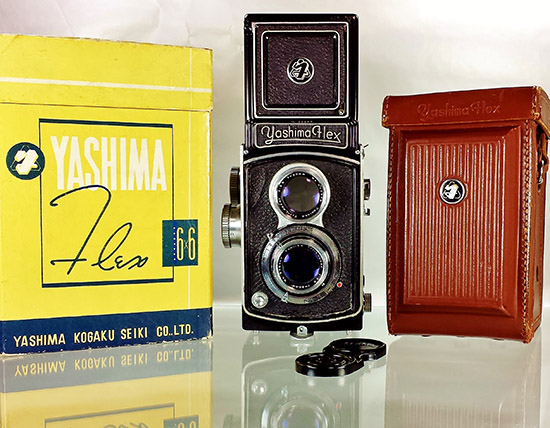 (Image courtesy of Chris Whelan)
(Image courtesy of Chris Whelan)
Yashima Flexes are rare, boxes even more so, yet Chris has managed to obtain a second camera with box, this one a little earlier and with a number of documents included (not shown to scale). Inspection Tag back and front:


Factory 5 year “Guaranty” (see also further below) with checklist repeated (presumably, the “METER test” is for the Yashica Flex model S). Note, the “29” is the Showa equivalent of 1954 (unfortunately, the month and day are not completed):
.jpg)
Yashima promotional pad of forms for recording details of photographs taken. Cover, back of pad and form:



The first document is some type of voucher or possibly registration - the bottom two lines contain Yashima's name, “Suwa” and “Nagano Prefecture”. The pink document, front and back, appears to be the retail store issued warranty for 1 year from 5 May 1954 (presumably the date of sale) to 4 May 1955 - how this fits with the 5 year factory “Guaranty” is not clear. The purchaser's name and address appears to be on the reverse:



(All Yashima Flex document scans courtesy of Chris Whelan)
Chris Whelan tells me that although the camera store listed in the document, “Onuki Katsura Materials Store”, Yokohama, Noge-machi, has relocated to a different Yokohama location, it still exists today.
Below is a Yashicaflex model S kit from most probably 1955 (the first model S box is predominantly white). The camera also belongs to Chris Whelan and parts of the kit, including user manual, are featured elsewhere on the site:
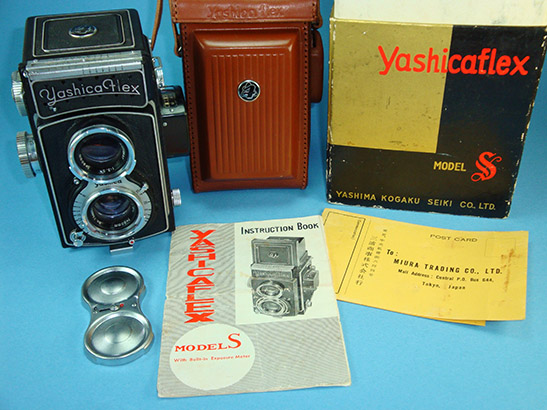 (Image courtesy of Chris Whelan)
(Image courtesy of Chris Whelan)
Below is a complete Yashica LM kit from probably late 1956, but possibly early 1957, (without the external distribution box which was usually discarded, see Boxes, but underneath, a slightly later camera is shown with both its boxes - note a different side of the presentation box is shown). English language user manuals and guarantee certificates for export cameras date back to at least early 1955 and possibly late 1954. Japanese language manuals were almost certainly there from the beginning but the earliest I have seen is from 1954 (see further below). The sometimes found JCII and JCIA tags are discussed further below. The “Yashica” branded silica gel is a nice touch but the logo suggests that it is from at least three years later (in fact the packet appears to be the same as found with the 1961 Yashica-Mat further below).
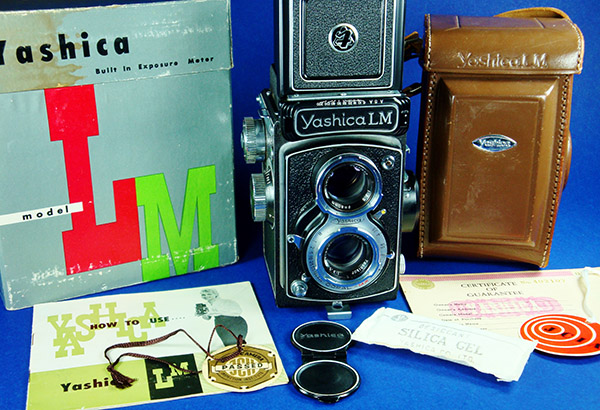 (Image courtesy of Chris Whelan)
(Image courtesy of Chris Whelan)
Slightly later version with both boxes:
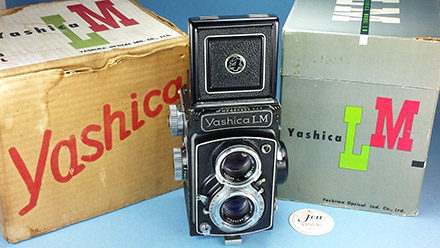 (Image courtesy of Chris Whelan)
(Image courtesy of Chris Whelan)
When the Yashica A, C and LM were launched in the US in 1956, ads showed them with cardboard “hats” with their model names and price. The model A kit below right included its “hat” (this hat is probably from later than 1956):
(Detail from larger web image on left, right image courtesy of Chris Whelan)
(Click on ad for larger image)
The 1959 Yashica A III was the Japanese domestic market version of the Yashica A. It was not available with black leatherette and the only significant difference to the Yashica A was that it did not have a hood logo. The Yashica A name could not be used in Japan because that had already been used for the Yashicaflex A (new model) which marketing material referred to as the “Yashica A” (Yashica B in export markets). All three “Yashica A”s shared the same yellow box, this lovely A III also features its documentation including “hat”:
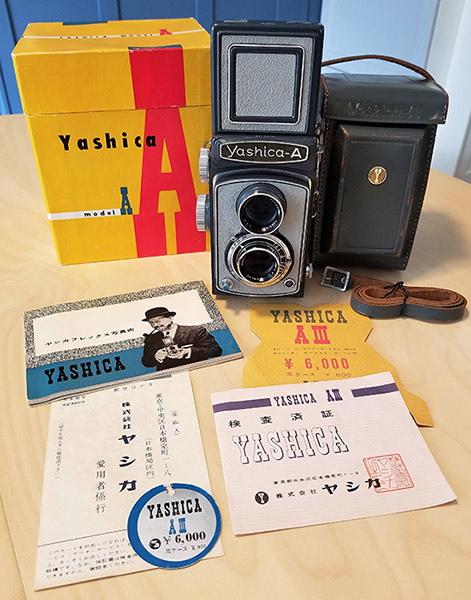
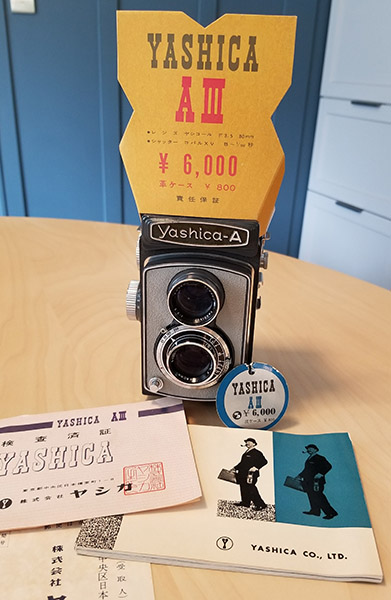
(Images courtesy of Chris Whelan)
The Yashica-Mat below is rather special. The serial number puts it at October 1961. It was bought new by correspondent Bill Walker's father and used for family photos, hard to believe from its immaculate condition. It has obviously been very well cared for by the family. The only item missing is the guarantee certificate. The kit is also interesting because of the matching period Yashica accessories, the grey case of the lens hood no doubt matching the last of the grey 1960 ever ready cases of the coloured Yashica Ds. Note that the JCIA and JCII tags are the same as the earlier 1956/57 examples above. The camera is also unique because of its “SV” shutter marking on the faceplate (see Yashica-Mat entry and A Most Unusual Camera and Shutter).
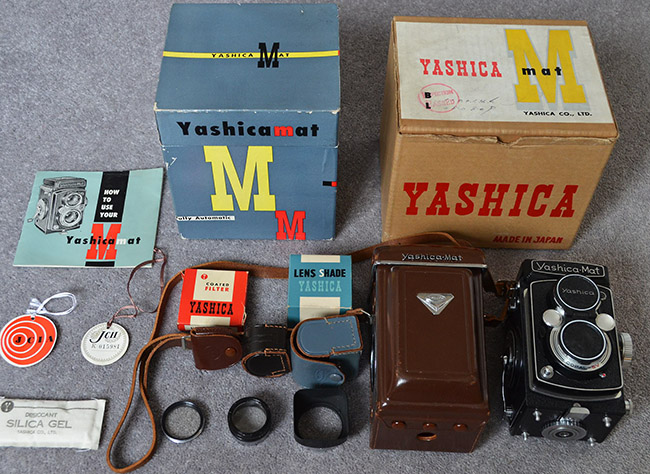
(Image courtesy of Bill Walker)
The Yashica A below is from 1964. It has the basics; camera, lens cap, case and box (late style with flap instead of lid). Presumably, there will have been a user manual, guarantee certificate of some sort and probably an outer box or by 1964, sleeve. What makes this one special is that it apparently still has its original plastic wrapping - certainly believable from the mint condition of the camera:
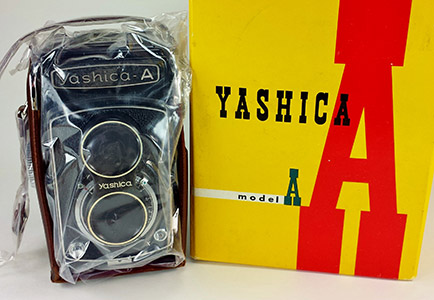
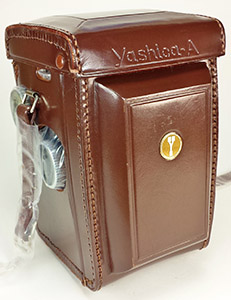
(Images courtesy of Chris Whelan)
Finding reasonably complete kits these days is rare but they do come up, sometimes even with the external box. There are a number in my database. Were all cameras sold this way? Probably, but I have no idea for certain. All were initially sold with lens caps and ever-ready cases and boxes already appeared with the Pigeonflex. However, at different points in time, various sellers advertised ever-ready cases separately. Without the ever-ready case, did the camera retain its “presentation” box? However, I have also seen evidence that suggests that even though cases were priced separately, there was no option to not include them in the purchase.
JCII Tags & Labels
The two tags from above (reverse shown below to approximate scale) are the self-explanatory “JCIA”, Japan Camera Industry Association, and “JCII”, Japan Camera and Optical Instruments Inspection and Testing Institute. Later, the name was shortened to Japan Camera Industry Institute to match the acronym.
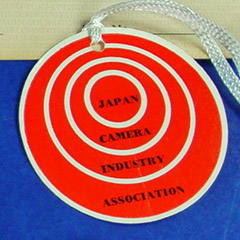
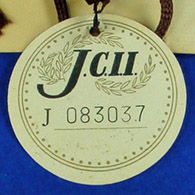 (Images courtesy of Chris Whelan)
(Images courtesy of Chris Whelan)
JCII was a Japanese Government sponsored organisation founded in 1954 with the aim of improving the quality of the camera and optical industry's export products. My understanding is that representative samples were tested and if they passed, that would apply to the whole production batch. The tag with the Yashica LM kit is an early form of that assurance. The tag below (front and back shown) is helpfully stamped with the date. It belongs to an early Yashica A of similar vintage to the LM.

 (Images courtesy of Chris Whelan)
(Images courtesy of Chris Whelan)
This style of tag was still in use with Yashica 635, ST 1020xxx, and Yashica D, D 1020xxx, both of which I believe are from February 1961. Both sides of the Yashica D tag shown below:


(Images courtesy of Tim Samuelson)
Many of us are familiar with the JCII's mid 1960s to late 1980s oval gold “Passed” labels, this one on a 1965 Yashica 44LM:

There are claims on the net that with this type, the two digit number following JCII, in this case “53”, represents the year of the decade and the month of the year that an example of that batch of product was tested - a camera with that sticker might be made a long time afterwards. In this case, the date would be from 1965, March.
The “JMDC” abbreviation on the label stands for “Japan Machinery Design Centre”. As I understand it, the JCII testing involved both quality measures and the meeting of certain design criteria.
Silica Gel
Some people are fascinated by packets of silica gel. This is for them!
Compared to the later silica gel found with the Yashica LM near the top of the page, seemingly authentic silica gel found with a 1957 Yashica LM:
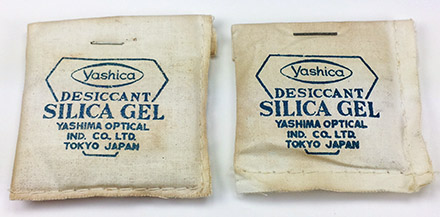 (Image courtesy of Chris Whelan)
(Image courtesy of Chris Whelan)
Slightly later silica gel packet from still before the company name change to “Yashica” in 1958 (except for the logo and company name, very similar to the type found with the 1961 Yashica-Mat outfit above and also immediately below):
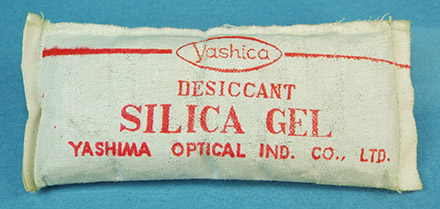
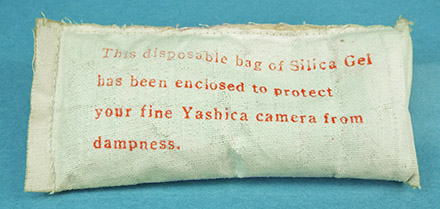 (Images courtesy of Chris Whelan)
(Images courtesy of Chris Whelan)
The silica gel found with the 1961 Yashica-Mat further above:
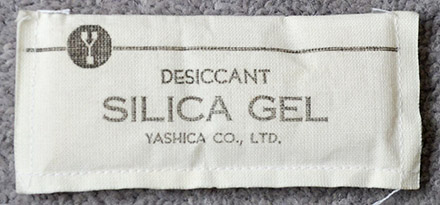
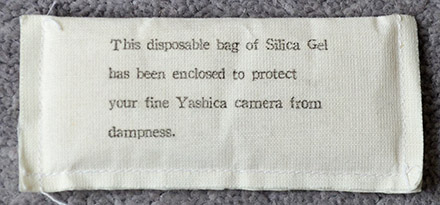 (Images courtesy of Bill Walker)
(Images courtesy of Bill Walker)
And then contributor Tom Heckhaus donated me my first very own packets (amongst some other great stuff)! These are different to Bill Walker's and earlier satchels though which all have sewn seams. These have crimped seams of some sort (heat or adhesive) and the font on the back is more modern than Bill's, although the logo is still the pre-1966 narrow “Y”:
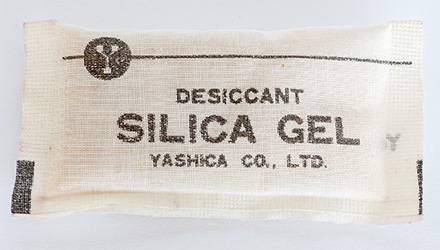
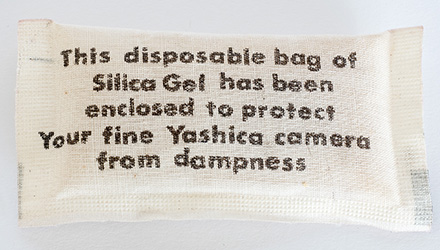
Guarantee/Warranty and Related Documents
If nothing else, these may tell us a little more about Yashima's/Yashica's operations and the likely availability of documents in other languages. From purely a collector's perspective, the presence of such documents make a kit complete and maybe also a little more special, implying perhaps that the contents have been well cared for.
There appear to be two types of guarantee certificates; those issued by trading companies and those issued by Yashima/Yashica.
Trading Company Guarantee/Warranty Documents
This is the blank Guarantee Certificate from the 1955 Yashicaflex model S kit near the top of the page:
 (Document image courtesy of Chris Whelan)
(Document image courtesy of Chris Whelan)
(Click on image for PDF of full document)
It is the earliest type English language guarantee document found. It is issued by the Miura Trading Co., Ltd. with a Tokyo address to send the tear-off card to and on the Information page, addresses for the “Japan Service Station” and the “U.S.A. Service Station” which is given as Japan Camera Information & Service Center at 393, 5th Ave., New York, a joint facility established by the Japan Camera Industry Association on behalf of its members (pre-dates Yashica's presence in New York discussed elsewhere). A similar Guarantee Certificate has been found with a Yashicaflex model AS-II of the same vintage and another with the second last Yashicaflex model A-II in my database. This last one has been completed in full. The serial numbers match the camera, the Place of Purchase is “Sangley Pt RP”, no doubt the US base at Sangley Point, Republic of the Philippines, and the Date of Purchase is “5/23/57”, 23 May 1957 for us antipodeans.
This “Miura Trading Co., Ltd.” stamp appears on the back cover of a Yashicaflex A user manual from a similar period found with an export Yashicaflex A-II (feet focusing scale and export A-II box):

(Document image courtesy of Chris Whelan)
The role of Miura Trading Co., Ltd. is not altogether clear to me. In an earlier photographic connection, the company's name appears at the end of the English language user manual for the pre-1950 sub-miniature Gemflex TLR made by Showa Optical Works, Ltd., Tokyo.
It is possible that Miura was providing a range of export related services to Yashima before the 1956 export push with Yashica A, C and LM models. However, I think that the role may have been more related to models sold through US Army PX and Navy NX stores. This is certainly much more likely with the Miura guarantee below found with a January 1961 Yashica-Mat sourced from the US, particularly given the guarantee's Tokyo address. As noted further below, by this time, US market guarantee documents were normally issued by Yashica with the location given as its New York office.
 (Document image courtesy of Callum Colville)
(Document image courtesy of Callum Colville)
Japanese “trading companies” seem to be a unique institution focused on exports and shouldn't be confused with wholesalers and importers in the target markets. However, the following warranty card was found with a 1973 Yashica TL Electro-X ITS 35 mm SLR:
 (Document image courtesy of Chris Whelan)
(Document image courtesy of Chris Whelan)
Clearly at that time, in the Okinawa prefecture in Yashica's own home market, warranty support was provided by the Okishiba Trading Co., Ltd. However, as the document is bilingual, it supports the idea that the trading companies had a role with sales through US PX/NX stores in Japan.
Yashima/Yashica Japanese Guarantee/Warranty Documents
The earliest Japanese market guarantee document I have seen is the 1954 Yashima Flex “Guaranty” found with the other Yashima Flex documents near the top of this page. The camera name and some other details are in English and Yashima's name is clearly displayed as the responsible organisation:
.jpg) (Document image courtesy of Chris Whelan)
(Document image courtesy of Chris Whelan)
The translated warranty information in the bottom left quarter says, “We will repair free of charge for any naturally occurring failures that occur within 5 years after the acceptance of the user's card with the camera manufactured by our company to which this inspection is attached.” The check list includes a non-completed “METER test” which is almost certainly for the Yashica Flex model S which does raise some questions about when models were released.
The next Japanese market guarantee documents I have seen are from 1955 for the Japanese market Model A (sold in export markets as the Model A-II, explained elsewhere). By serial number and matching camera trim details, the top one is expected to be from quite early 1955 - contributor Chris Whelan has deciphered the date as 28 February 1955. Like the Yashima Flex version above, it is the only one I have seen. Both the camera and documentation were acquired from Japan by contributor Leigh Harris. As previously, the “METER test” no doubt applies to the Model S, possibly Model AS-II (less likely, this model does not appear to have been sold in Japan) and/or the Model AS-I (no examples found):
 (Document image courtesy of Leigh Harris)
(Document image courtesy of Leigh Harris)
The warranty information is more circumspect this time with no time frame mentioned.
The “Guaranty” was supplied in an envelope together with a card that Google Translate doesn't make sense for me apart from confirming that it is Yashima issued and somehow related to the guarantee document (note, these scans are not to scale):




(Document images courtesy of Leigh Harris)
The second Yashicaflex A guarantee document appears to be from later in 1955 (note that two word form of Yashica Flex is still used on both). It turns up from time to time and except for the model name, is identical to the early Yashicaflex Model C document (and presumably for other models from the period):

(Detail from larger web image)
Below is a later Yashicaflex Model C example, most probably from earlyish 1956. It is very similar except that there are fewer English words and the company name is now Yashima Optical Industries:
 (Document image courtesy of Leigh Harris)
(Document image courtesy of Leigh Harris)
Except for the model name, this 1956 Yashica Rookie (described as “Yashicaflex Model R”) certificate, is the same:
 (Document image courtesy of Chris Whelan)
(Document image courtesy of Chris Whelan)
As is this 1957 Yashica-Mat certificate with the model name, “Yashicaflex Model Mat”:

This was found with a Japanese Yashica-Mat manual and the document below, front and back shown. It appears to be a warranty registration card to be mailed in. My presumption is that the fancy guarantee certificate is the owner's copy and the other is the official registration record.


This is a 1958 Yashica 44 guarantee document. It came with a similar post paid document as the Yashica-Mat above. The company name is still Yashima Optical Industries:
 (Document image courtesy of Chris Whelan)
(Document image courtesy of Chris Whelan)
By 1959, the company name was Yashica on this Yashica A III guarantee document:
 (Document image courtesy of Chris Whelan)
(Document image courtesy of Chris Whelan)
Yashima/Yashica US Guarantee/Warranty Documents
Yashica export cameras sold in the US from the mid 1950s to early 1960s had similar versions of the “Certificate of Guarantee” found with the Yashica LM near the top of the page. They all featured Yashica's US addresses. The one below is a little planer and might be earlier - it was in the same Yashica A box as the March 1957 JCII tag further above. Or, it may be a separate “Guarantee Registration” (as it says on the card) to an earlier “Certificate of Guarantee”, in the style of the Japanese documents, which may have simply been the owner's copy - see the Japanese Yashica-Mat examples above. The Yashica LM “Certificate of Guarantee” above and the Mat-LM and Yashica D version below have tear off registration cards. It is not known where this one was printed but the Certificates, up to at least the Mat-LM version, were printed in Japan:
 (Document image courtesy of Chris Whelan)
(Document image courtesy of Chris Whelan)
(Click on image for PDF of both sides)
Below on the left is a blank Certificate of Guarantee found with a Yashica Mat-LM and on the right, a very similar one found with a 1961 Yashica D, both appearing near identical to the 1956/1957 Yashica LM example at the top:
(Right document image courtesy of Tim Samuelson)
(Click on left image for PDF of full document)
One element of difference is the colour of the Yashica seal in the top left corner and the certificate number on the right; a greeny gold colour for the Yashica LM, black for the Yashica Mat-LM and purple for the Yashica D. Two Yashica 44As have those two items in bright green.
Subsequent styles are a much rarer find, probably because they appear far less interesting. This “Guarantee Certificate” was issued with a Yashica sold in March 1964.
 (Document image courtesy of Chris Whelan)
(Document image courtesy of Chris Whelan)
Very similar, but now “Warranty Certificate”, was found with a 1969 Yashica 635:
 (Detail from larger web image)
(Detail from larger web image)
This is a 1973 warranty registration card for a Yashica Mat-124G:
 (Detail from larger web image)
(Detail from larger web image)
Back to “Certificate of ________”, this new technology “Certificate of Warranty” is for a Yashica Mat-124G. Based on serial number, it is probably from 1982, the year before Kyocera branding would likely have appeared:
 (Detail from larger web image)
(Detail from larger web image)
Service Centres, Offices and Languages
A warranty card for an SLR lens from about 1967 lists the following worldwide service centres:

(Document image courtesy of Chris Whelan)
By the time of a post-1983 Yashica Mat-124G user manual, Yashica listed addresses in Japan, USA (Main, Midwestern and Western offices), Canada, Germany, Austria, Switzerland, Denmark, Brazil and Hong Kong. Presumably, camera documentation reflects those markets. Multi-lingual user manuals usually feature English, German, Portuguese (in connection with the significant Brazilian market) and also French, even though France did not feature in the list of offices. The early commitment to Sweden also included user manuals in Swedish and a service center but interest seemed to fade in the early 1960s along with TLRs, probably because of intense competition in a small market dominated by a myriad of 35 mm camera makers.
Japanese Language User Manuals & Guides
Japanese language user manuals and other guides almost never surface in the west and are relatively rare on Japanese sites as well. That is unfortunate. English language and multi-lingual Yashica TLR manuals are amongst the most boring camera manuals there are. Some Japanese language booklets are amongst the most interesting manuals in existence.
There are generally two styles of owner's books up to the end of the 1950s. There are fairly typical user manual varieties and then more comprehensive photographic guides covering much more than how to operate the camera. These are called “Yashicaflex Photography”, or in the case of the Mat, “Yashica Mat Photography” and the Yashica 44, “Yashica 44 Photography” (there is also a “Movie” for the early 8 mm movie cameras and one called “Yashica 35”, you guessed it, for the Yashica 35). This type seemed to be introduced in 1955 just before the Yashicaflex C was released and lasted until perhaps 1958 or so. The order of the examples below is chronological rather than by style. Note, some models seemed to be featured in Yashicaflex Photography and the evidence is that there was no other user manual for them whilst some others relied on Yashicaflex Photography as a general guide and these were issued with either an additional instruction sheet (first Yashicaflex C and Yashicaflex A2), or user manual (Yashicaflex AS).
Where I have assembled scans by Chris Whelan and others into PDFs, the order of pages may not be correct - that doesn't matter as the intent is to show typical content rather than follow the narrative which I don't understand in any case.
(Note for MacOS users only: Safari is sometimes displaying only the left half of double page scanned PDFs if the first scan is a single page - common with my cover pages. Suggest using a different browser, or Preview, instead.)
Yashicaflex Photo School
I don't think that this is meant to replace a user manual but it's very similar to the following “Yashicaflex Photography” books in appearance, size, layout and concept. The machine translation of the cover suggests that it is called “Yashicaflex Photo School”. The seller's notes indicate that it is the first edition dated 20 April 1955:
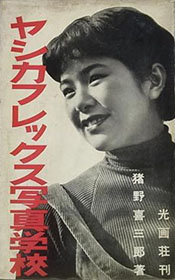 (Document was for sale on Japanese auction site)
(Document was for sale on Japanese auction site)
(Click on cover for PDF of selected pages)
Comparison to the first Yashicaflex Photography books shows similar content, a set of the same photos regarding holding the camera, and a more primitive TLR schematic drawing. A picture of an A-II is of an early body type whereas the 10 August 1955 edition of Yashicaflex Photography shows both early and late bodied cameras.
There is a notation in the Yashicaflex Photography books that they are not for sale, this one has a price of 160 yen on the back cover. My take is that this earlier book was an initiative to provide a comprehensive photography guide for sale alongside Yashima's cameras but that the company then decided that it was a good idea to give it away with new cameras, i.e. it was a precursor to the Yashicaflex Photography books.
Yashica Flex model B
The earliest user manual I have seen is a damaged Yashica Flex B booklet (almost certainly from 1954), which with its camera, has turned up for sale on a Japanese auction site. Unfortunately, no inside detail is visible but what I can make out from the slightly larger originals showing the edges of inside pages (now loose), it appears to be a fairly typical user manual with words in both Japanese and English on the cover. The two low resolution images show the full manual cover and a larger view of part of the cover:
.jpg)
.jpg) (Detail from larger web images)
(Detail from larger web images)
Yashica Flex model A
Three Yashicaflex A-II cameras have been found on Japanese auction sites with white covered user manuals with the following annotation on the cover in English “YASHICA FLEX MODEL A DIRECTIONS FOR USE” below Yashicaflex in Japanese, “ヤシカフレックス”, and reference to model, or type, “A”. The English text is similar to that found on the cover of the English version further down. Both are one of the last instances of “Yashica Flex” in English appearing as two words. Note, the English language version covers both A-I and A-II models. The Japanese version may as well, or it may be limited to the A-II (see comments for the next manual).
The manuals, plus possibly the Yashica Flex B version above, appear to read left to right whereas the following book type guides, clearly intended for the Japanese market only, read the more traditional right to left. Together with the English words on the cover, it suggests the possibility that early manuals may have been bi-lingual to some extent.
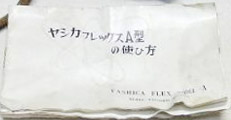
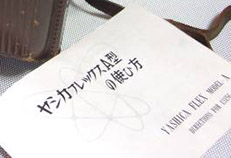 (Detail from larger web images)
(Detail from larger web images)
Yashicaflex models S, A-II
“Yashicaflex Photography” (as translated from the cover below) is an early guide that has been found with Yashicaflex cameras on Japanese auction sites. As I understand it, the book is a general guide to photography using Yashicaflex cameras on sale at that time but it doubled as the user manual for some of those cameras as well. In concept, it is quite different to any English language manuals.
This is the first edition, dated 10 August 1955, and features the Yashicaflex models S and A-II. (Just as there is an earlier Yashicaflex model A manual, there was almost certainly an earlier model S manual.) In the book, the A-II is simply referred to as the “A”. There is evidence that the A-I was not sold in Japan (except perhaps the very early A-I type with Y.S.K. shutter) so there was no need for the “I” or the “II”.
Under the dust jacket, this edition has a brown cloth faced soft cover:
(Click on dust jacket cover for PDF of selected pages)
In the next section, I'll let contributor Chris Whelan explain more in relation to his slightly later reprint of the book.
Yashicaflex models S, A-II & C
The 20 October 1955 reprint includes a supplement covering the Yashicaflex model C (claimed to be released in September 1955) in addition to the other two models. Under the dust jacket, it has a dark blue cloth faced soft cover - these are the only differences I am aware of. Shown here with the model C that it came with:
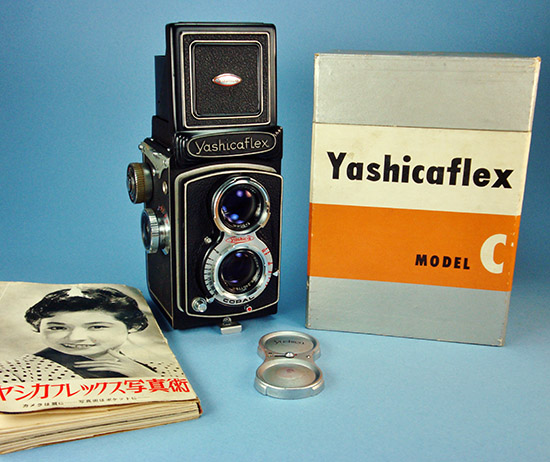 (Image courtesy of Chris Whelan)
(Image courtesy of Chris Whelan)
Note, all versions of “Yashicaflex Photography” up to 1958 are machine translated with the name as “Yashica Flex” - I don't see the break in the Japanese name and believe that it should be the single word form “Yashicaflex”, although in 1955 there was still a mix of use in different documents.
Owner Chris Whelan writes:
“The model on the cover of the 'Yashica Flex Photography' book is well know film actress Ayako Wakao or Wakao Fumiko as she was identified here in this book. She is still living and made over 100 films in her career! The photographer was also well known, Matsushima Susumu (1913-2009).
This book contains a wealth of info about the company. Towards the back of the book they list the publishing dates. First printing was August 5, 1955 with an issue or, publishing, date of August 10, 1955 and a second printing October 20, 1955. The 'author' was the Shinbashi Service Department Planning Office. The print shop was Toppan Printing Co., Ltd., Tokyo. The Publishing Office was Yashima Optical Seiki Co., Ltd. Other addresses listed are; Sales Department Tokyo Shibata Village Town, 4-6; Shinbashi Service Department Tokyo, Shinbashi 5-34 and the Suwa Factory Nagano Prefecture Shimosuwa.”
Note, the publisher for all the found Yashicaflex and Yashica Mat Photography booklets until at least the 1 December 1957 reprint of the Yashicaflex B version is listed as Jisaburō Ushiyama, younger brother of co-founder Yoshimasa.
To put the scope of the book and its courting of celebrities into perspective, Yashima made its first camera just 2½ years previously. Regarding the guide itself, Chris adds:
“It's about 170 pages long and reads right to left. The booklet describes what a TLR is, briefly highlights the various Yashicaflex models, tells how to take pictures and to set up a darkroom and develop your film and make prints. A small removable supplement (6 fold out pages) describes the model C and how to use it.”
Its dimensions are 174 mm high x 104 mm wide.
Although the cameras covered in Chris' October reprint are the models S, A (A-II) and C, Chris tells me that in the book they are referred to as “Type-S”, “Type-A” and “Type-C”. That is somewhat unusual and again is probably related to the machine translation, see the early Japanese guarantee documents above which have “Yashica Flex Model A” in English, a nomenclature that appears on most boxes and many documents from the Yashica Flex S to the end of the 1950s and in some instances, beyond.
There is a section on loading film and setting up a camera using the Yashicaflex A-II as an example. This part is much like the Yashicaflex Directions for Use Model A & C but the model demonstrating the camera in the Japanese document is male, including hand shots, whereas all the pictures in the English language document are similar but different with a female model used instead. There is also a section on Yashicaflex model S exposure reading and setting, the only difference of any substance with the models A-II and C. The user manual parts of both the Japanese and English language documents are very similar down to even the age of the cameras used (both use an early model C from near its release and an A-II of similar vintage and both use model S cameras that appear to be from some time earlier, i.e. early bodies and NKS-FB shutters still).
It doesn't surprise me that the two AS models, noted in the English language Yashicaflex Directions for Use Model A & C, are not mentioned - the evidence, discussed elsewhere, is that like the model A-I noted above, these models were not sold in Japan. The very rare Yashicaflex model A-III is also missing but the Directions may be from a fraction later in time - the only example of the camera found was for sale in Japan.
Even though the content of the 10 August 1955 edition of Yashicaflex Photography and Chris Whelan's 20 October 1955 reprint is more or less identical except for the supplement, the actual scans of selected pages are different for each. I have scanned more pages to give an idea of the scope of the book, Chris has the model C supplement and his scans are flat pages which provide undistorted detail (the first is also accessible from the model S and A-II entries and the second from the model C entry on the respective 66 Models pages):
Selected pages from the 20 October 1955 reprint (dust jacket front and back and blue soft cover spine - see also “Chris Whelan's Collection” further below):

 (Document scans provided courtesy of Chris Whelan)
(Document scans provided courtesy of Chris Whelan)
(Click on dust jacket cover for PDF of selected pages)
Dust Jacket
Subsequent Yashicaflex Photography booklets, at least for some later models, are unlikely to have been supplied with a dust jacket - a circa 1958 brochure shows then current models with their user manuals but only the 635 and 44 appear to have either dust jackets, or some form of graphics on printed paper covers.
Japanese Text
Note also that as Chris has already identified for this example, all versions of Yashicaflex Photography read the traditional right to left, meaning from our western perspective, back to front. Some of the text reads top to bottom. Unlike with western language, the direction of characters is not important, anyone understanding Japanese will automatically know which direction characters are to be read, including from left to right (more on that below).
Yashica Rookie
Whether simply in keeping with its budget status or whether supplied together with “Yashicaflex Photography” as for some other models (I doubt that, none found with a Rookie yet), the 1956 Yashica Rookie user manual is a fairly typical international style Yashima manual, thin and stapled, but formatted for the Japanese language, including reading from right to left. Chris Whelan tells me that it is about 175 mm x 105 mm and over 20 pages, not including covers, so still a few more pages than the typical English language manuals from the 1950s. According to Chris:
“The first page inside from the cover are pictures (3 of them) of the Yashica factory workers hard at work making our Yashicas. The next page is all in Japanese and appears to speak about the benefits of being the 'Rookie' as it relates to photography... that you can see the world with young or new eyes (my interpretation).”
The rest of the manual is similar to the typical export types, perhaps with a little bit of extra info here and there:
“Pages 3 to 8 are images of how to load film and get started with using your Rookie. Page 8 actually shows how to attach a cable release and shows two different flash units being attached to the accessory shoe. Pages 9 and 10 have drawings of modern (1950s modern) foreigners holding a TLR and describes how to focus and take low angle shots. The remainder of the booklet shows the typical users manual info... what is aperture, exposure, how to use an exposure meter, how to adjust shutter speeds and their relationship to film speed and aperture settings. It finishes with some exposure tables, some flash info and on the last page explains depth of field (almost as an afterthought).”
Below are the covers and a pair of inside pages:
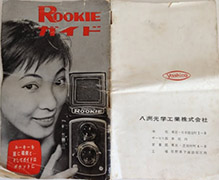 (Document scan provided courtesy of Sandu Baciu)
(Document scan provided courtesy of Sandu Baciu)
(Click on cover for PDF of pair of inside pages)
Chris has translated the note on the cover as:
“Look sharp with the Rookie on your shoulder - and keep the Guide in your pocket.”
Yashicaflex A2
This 1956 Yashicaflex A2 instruction sheet was for sale on a Japanese auction site. The “Yashica” name on the cover is dealt with elsewhere including the Yashicaflex A2 entry on the respective 66 Models page:
 (Document scan provided courtesy of Leigh Harris)
(Document scan provided courtesy of Leigh Harris)
(Click on cover for PDF of two sided instruction sheet)
With it was this Yashicaflex Photography book which seems to use the Yashicaflex C as a generic example. The edition or printing is not known but it may be the 20 August 1956 edition referred to further below.
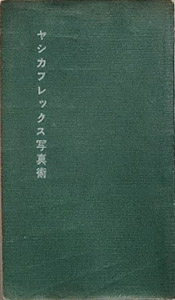 (Seller's photo of Leigh Harris book)
(Seller's photo of Leigh Harris book)
Both the instruction sheet and Yashicaflex Photography read right to left as for other editions of the book. Below is an instruction sheet with a different edition, or printing, of Yashicaflex Photography, this time still with a sleeve, perhaps to hold the sheet:
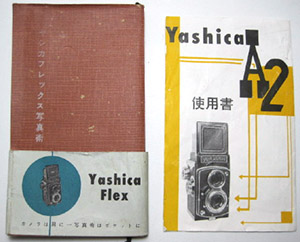 (Documents were for sale on Japanese auction site)
(Documents were for sale on Japanese auction site)
A generic version of Yashicaflex photography plus a specific user manual seem to have also been supplied with the forthcoming Yashicaflex AS.
Yashica-Mat
According to a machine translation, the cloth faced cover of the 1957 Yashica-Mat booklet (probably supplied without dust jacket, see circa 1958 brochure) reads “Yashica Mat Automat Photography” (that piece of machine tautology contains the English “Mat” so I will use the spine version) and is very similar to the first Yashicaflex Photography. On the spine is “Yashica Mat Photography” and on the back at the bottom is the Yashica in the oval logo which started appearing with the Yashicaflex model C but was already on the first edition of Yashicaflex Photography which slightly predated the model C release. It is 183 pages plus a couple of blank pages at the beginning and end and its size is 102 mm x 174 mm.
Publication details translate as printed on 25 March 1957 with issue, or publishing, date of 1 April 1957 so this is most likely the first edition. The featured camera/s still has/have 75 mm lenses and MX shutter but unlike the first English and Swedish language manuals, it/they are (a) production model/s already. However, schematics of an f/3.2 80 mm viewing triplet and f/3.5 80 mm Tessar taking lens suggest that this focal length was planned from the beginning and that the 75 mm versions were a stop gap.
The booklet was found with a neatly folded guarantee certificate inside (see further above) for camera 68748 with taking lens 27240 which is about 3-4,000 cameras after the end of the 75 mm Lumaxar lens version, or about 1 to 2 months production.
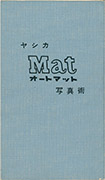 (Click on cover for PDF of selected pages)
(Click on cover for PDF of selected pages)
The booklet follows the general style of the Yashicaflex Photography series including the typical back to front (to westerners), right to left reading style. It was printed on 25 March 1957 with an issue or publishing date of 1 April 1957. I have scanned selected pages to give an idea about content. For westerners, the order of the double page scans is still more or less correct except that, e.g., page 2 will be on the right and page 3 on the left.
The booklet starts with an introduction by company president, Yoshimasa Ushiyama, followed by the operating principles of a camera, what a TLR is, a schematic of a leaf shutter including escapement and then film emulsion. The parts of a Yashica-Mat are identified as in any international manual. Interestingly, the images used for this are the same two that have had their nameplates modified from “Yashicamat” to “Yashica-Mat” in the first English and Swedish “Yashicamat” user manuals.
Then there appears to be a discussion of the lenses. The operations of various aspects of the Mat are covered including focusing, DoF and use of accessories such as tripod and lens hood. This is not unlike the second half of international manuals but those are much more basic. Then there are three double pages of photos about how to load film and take photos as in any international manual. However, unlike in the first English and Swedish manuals, the camera illustrating camera operations is an early production type. The featured flashgun is a Minicam Synchron Master.
General guides to photographic techniques and composition follow. Then there is a section on setting up a darkroom, developing film and enlarging and printing. There is a comprehensive glossary covering all aspects of photography (I understand this because helpfully, the words or phrases being explained include the English equivalent in the titles). Finally, there are some tabular guides that seem to be related to exposure for particular scenes/circumstances but I am not entirely certain about that.
Yashicaflex model AS
Like the 1956 Yashicaflex A2, the 1957 Yashicaflex AS was supplied with a user manual with “Yashica AS” on the cover and reads left to right in the western style (examples found with several cameras):
.jpg) (Document was for sale on Japanese auction site)
(Document was for sale on Japanese auction site)
(Click on cover for PDF of selected pages)
Also for sale with the same camera that the above manual belongs to was a revised edition of “Yashicaflex Photography”. A few pages were displayed by the seller including, somewhat similar to the book found with the Yashicaflex A2 user manual, how to operate a Yashicaflex TLR featuring the Yashicaflex C. A second book with the same cover and text colours, meaning same edition, has been found with another AS together with the “Yashica AS” user manual and a third book by itself also with an AS camera. The cover colour is different to the book found with the Yashicaflex A2 and therefore may be the 5 February 1957 edition:
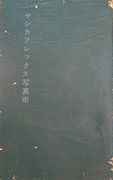 (Document was for sale on Japanese auction site)
(Document was for sale on Japanese auction site)
(Click on cover for PDF of selected pages)
Note: The first page inside the cover lists the editions. My translate app only makes sense of the first edition date. You may have more luck.
Later models seemed to get their own dedicated Yashicaflex Photography books.
Yashicaflex model B
The version of “Yashicaflex Photography” below, also owned by Chris Whelan, is for the late 1957 Yashicaflex B (new model) which replaced the model AS after only a few months. Chris tells me that it is 170 mm x 117 mm and has 160 numbered pages plus a few other blank and miscellaneous pages. As well as “Yashicaflex Photography” in Japanese, there is an English “B” on the spine and like all Yashicaflex Photography books, it reads right to left:
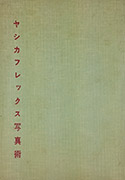 (Document scan provided courtesy of Chris Whelan)
(Document scan provided courtesy of Chris Whelan)
(Click on cover for PDF of selected pages)
The useful thing about this manual is that it lists some previous editions: the first Yashicaflex Photography covering models S and A-II published on 10 August 1955 (the 20 October 1955 reprint with model C supplement is not mentioned); a version published on 20 August 1956, which could be for the Yashicaflex model A2; a version published on 5 February 1957 and the version for the model B released on 1 July 1957 and reprinted 1 December 1957. The Yashica Mat Photography book of 1 April 1957 is not mentioned, I guess because it is a stand alone manual featuring only the crank-wind Mat. Even thought the content is similar, it seems that Yashima wanted to differentiate the Mat from other models.
Yashica 44
Collector Kirk Thorsteinson features this Yashica 44 set with presentation box, ever-ready case and Japanese warranty card and user manual on the Yashica page of his Flickr site where there are more and larger images:
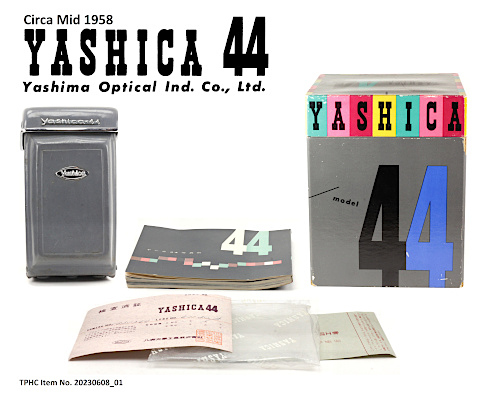 (Image courtesy of Kirk Thorsteinson)
(Image courtesy of Kirk Thorsteinson)
The fine print on the cover in Japanese translates as “Yashica 44 Photography”. Kirk tells us that it is 125 pages and reads from right to left. The brochure mentioned further below refers to 128 pages but that might include blank pages as well. The image below shows the covers and the section on how to use the camera:
.jpg) (Image courtesy of Kirk Thorsteinson)
(Image courtesy of Kirk Thorsteinson)
(Click on image for larger version)
Yashica A III
The “Yashicaflex Photography” featuring a 1959 Yashica A III (Japanese market Yashica A) is also from Chris Whelan's collection. It continues with the traditional right to left style but is now a briefer, more compact booklet of 150 mm x 104 mm size and 83 pages according to Chris, plus some blank “filler” pages:
 (Document scan provided courtesy of Chris Whelan)
(Document scan provided courtesy of Chris Whelan)
(Click on cover for PDF of selected pages)
The really interesting thing about this user manual is that it includes an excerpt from an English article titled “The Yashica Story”. A story with the same title appears in the 24 November 1960 edition of the Singapore Free Press newspaper. The first sentence of each of the stories is identical but then the stories diverge to focus on different aspects. They may have been based on press releases issued at different times. There is also a picture of the company founder, President and later Chairman, Yoshimasa Ushiyama, in both this and the Yashicaflex B (new model) version. More details can be found on the Yashica - Success & Failure page.
More Yashicaflex/Yashica Photography
On line, I have also found examples for the 1957 Yashicaflex A (new model, see also next paragraph) and a grey Yashica D version, claimed to be dated 1 May 1958 and with 158 pages, it appears to be very similar to the model B above. As well as the vertical “Yashicaflex Photography” in Japanese, for the first time there is the horizontal name “Yashica” in English. The date is interesting, it is six months earlier than the commonly quoted release in November which matches my date code theory. As it seems to be largely based on the model B version (effectively an identical camera), perhaps it was prepared in advance? The cover of an obviously later Yashica D manual with pen annotation “'67”, presumably 1967, suggests something akin to export manuals.
A circa 1958 Japanese brochure has ads for the “Yashica A”, “Yashica B”, “Yashica 635”, “Yashica Mat” and “Yashica 44” as well as the Yashica 35 and Yashica 8 and Yashica 8T-2 movie cameras. As discussed elsewhere, the Yashica A and B are not our export models but the Yashicaflex models A and B which are quite different. Each is featured with its user manual which appears to be in a typical Yashicaflex Photography format, as are the two movie ones with the English words “Movie” and “Yashica 8 Movie 2” on the covers, as well as Japanese text. As can be seen above, the “Yashica 44 Photography” booklet is almost square but slightly wider than tall, the “Yashica 35 Photography” (Japanese text) booklet is much wider than tall, like the earlier ones turned on their side. The books that belong to the earlier model cameras, the Yashica-Mat, the Yashica(flex) A and B and the Yashica 8 movie camera have covers with monochromatic printing whereas the others feature more colourful printing like the Yashica 44 above. None seem to feature dust jackets. Helpfully, the number of pages is also listed: Yashica Mat 180 pages, Yashica A (Yashicaflex A) 80 pages, Yashica B (Yashicaflex B) 160 pages, Yashica 635 160 pages, Yashica 44 128 pages, Yashica 35 180 pages and Yashica 8 and 8T-2 both 108 pages.
Chris Whelan's Collection
To give a comparative idea of size and format, the photos below show Chris Whelan's collection of Japanese manuals. Left to right in first image; Yashicaflex Photography for Yashica A III, Yashica Rookie manual, Yashicaflex Photography for models S, A-II and C sans dust jacket and Yashicaflex Photography for model B. In the second image, the blue Yashicaflex Photography for models S, A-II and C is shown with dust its jacket on:


(Images courtesy of Chris Whelan)
A “Modern” Yashica Mat-EM Manual
Recently, Chris has acquired a Japanese version of the Yashica Mat-EM user manual (1964-1967). Compared to the multi-lingual version commonly found, it is quite a bit more detailed but no more so than other single language manuals from the period. It reads left to right in the “modern” Japanese style. Click on the cover for the full PDF version:
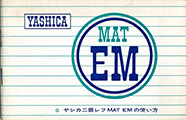 (Document scan provided courtesy of Chris Whelan)
(Document scan provided courtesy of Chris Whelan)
Export Market User Manuals & Assembling Charts
User Manuals
This section focuses mainly on English language user manuals. They sometimes come up on eBay and specialist classic camera sites. Downloadable PDFs are available for most export models from Yashica A, C & LM onward from Mike Butkus at OrphanCameras.com.
(Reminder note for MacOS users only: Safari is sometimes displaying only the left half of double page scanned PDFs if the first scan is a single page - common with my cover pages. Suggest using a different browser, or Preview, instead.)
Below is a leaflet which may be the earliest English language instructions found for the Yashicaflex Model S (2 copies found with their cameras 10 years apart on opposite sides of the world, details on the Yashicaflex S page). Following that are PDFs of the historically interesting Yashicaflex Model S Instruction Book, Yashicaflex A Directions for Using Models A-I and A-II, Yashicaflex AS Directions for Using Models AS-I and AS-II, combined Yashicaflex Directions for Use Model A & C with Models S & AS supplement (for Japanese version, see above), selected pages from the Swedish version of the very earliest Yashica-Mat manual with the single word “Yashicamat” nameplate and ASA only film reminder and Yashica Auto manual:
(Click on leaflet for larger view and on covers for PDFs of full manuals, except for the Swedish “Yashicamat” which is most pages)
(The Yashicaflex Model S Instruction Book scans were provided by eBay seller Kathryn, the Yashicaflex AS and Yashica Auto manuals are provided courtesy of Tom Heckhaus, and the Yashicamat pages are provided courtesy of Göran Årelind)
The following manuals are more common ones. The supplementary page for updated operation without reset button for the Yashica C and LM (function on later versions is automatically completed by closing the camera back), Yashica A first version and Yashica 12 manuals are provided by Chris Whelan, the Yashica A second and third version and Yashica 24 manuals are provided by Tom Heckhaus, the Yashica C and 44A manuals are provided by Göran Årelind, the early version Yashica 635 is provided by Bill Barr and the rest are mine. Note that both the Yashica C and LM manuals are for the earlier versions of the cameras with film counter reset buttons still. Note also that the first two versions of the Yashica A, C and LM user manuals used very similar covers to each, only differing in colour, the first for each model with flight attendant in Canadian Pacific Airlines uniform. The versions below are the first, second and third Yashica A (there may have been later ones) and the second earliest Yashica C and LM. The third version of Yashica C and LM user manuals have the same covers but delete reference to the reset button and use different pictures inside:
(Click on supplementary Yashica C & LM page for larger version)
(Click on covers for PDF of full manuals)
All models are similar to operate, the main things to watch when using a manual from a different model or version is the film counter reset button with models so equipped, the different exposure meter reading scales and film advance by red window, auto-stop or crank wind.
Assembling Charts
Yashica also produced “assembling charts” for a range of models. These are basically parts diagrams and are invaluable for disassembly and reassembly of cameras. There are some free ones floating around the net plus there are sets for sale.
Tom Heckhaus has scans of the original Yashica A, D, 635, E, 24, 12, 44A and 44LM and Yashica-Mat/Mat-LM, EM, 124 and 124G charts. The originals were obtained by him personally in the late 1980s from the Kyocera Parts Department Manager in New Jersey and he has written permission to distribute both these and copies of the user manuals. Because some have tried to profiteer from his generosity in the past, at this stage, they are not available for general distribution but if you have a real need, write to me and I may be able to assist.
Choosing & Collecting
People buy cameras to use, to collect or to both use and collect. Using old film cameras is a personal choice about what you are looking for in photographs and how you think you want to achieve that. If you think that a Yashica TLR is the right tool for you, there is quite a bit of relevant information on this site and this page as well which ought to be useful. In my mind, the question is whether you want simple and basic or the best quality image that you can possibly obtain (that wont necessarily be the best photo or even noticeably “better” quality). That is also the way the dollars pan out. There are a number of ways to go in either direction (you can't get more resolution than the Yashinon but you don't need a Yashica Mat-124g to achieve that) but most likely, later cameras are the best proposition simply in terms of both wear and tear and problems caused by long term storage. Therefore later cameras tend to be more expensive (except for rare models). Contrary to what some may say though, there is nothing inherently wrong with the earlier models.
There are examples of Japanese websites where people think nothing of tearing down and rebuilding user Pigeonflexes and Yashima Flexes whereas outside of Japan, collectors can't find examples for love or money. It's all a matter of perspective and what you want from your photography. If you are a resolution junkie and worry about whether Lumaxars can out perform Yashinons, its probably time to concentrate on digital.
Collecting is a bit like using; it depends on where your interests are and whether champagne tastes match your pockets. I don't have a view about what should be collected or not but I do have some thoughts about what is doable or not.
In order to retain or grow value in your collection, mint is what you should aim for but overall good condition compared to other examples commonly available is a good starting point (this might be the time for me to admit that I can't resist a bargain and that some of my cameras may have more value as a doorstop - we all gather cameras for different reasons). Starting out buying a nice Yashica Mat-124G will leave you poor for a long time and if users stop using them, they wont be worth near as much to collectors as they fetch now. That is unlikely to be the case with a Rolleiflex for example. I wouldn't start collecting with late model Yashicas.
Often, collectors start because they personally have some examples of something interesting or they look for something that may be a challenge but is achievable as well. There are a stack of Yashica TLR collectors, including one or two of my contributors, and OK, I admit me, that thought that there are the Yashica A, B, C, D, 635 and some crank wind models to worry about. The more worldly amongst us may have heard of the Yashica LM and maybe even the Yashicaflex “A” and/or S (don't laugh, these models were comparatively rare outside of the US). In the current time period, in the second decade of the 21st century, regardless of the size of your bank account, it will be almost impossible (I am not taking bets) to find all 39 known Yashica 66 and 44 models, let alone all possible major variations of which I count at least 82. And then there are the minor ones. Some collectors have come close to covering all the major bases but nearly all of them started a long time ago when these cameras were more plentiful and certainly less expensive. But they still have gaps.
My advice is, to develop a collection plan. If you are happy buying just what becomes available, that is a plan as well. Just don't despair when there are half a dozen gaps on the shelf that you can't fill. You may decide that you want to collect from a certain time period or have an example of every model with a selenium cell exposure meter (almost possible but probably bad luck in regard to both the Yashicaflex AS-I and Yashica Auto 44 and assuming that more than two Hi-Mecs made it to the market place).
My own approach has been to look for what I think are representative examples - that has led to several versions of the Yashicaflex Model S and I would consider more, but I'm not interested in the Yashica A or Rookie as the Yashicaflex A series cameras are very similar and there are quite a few. I'm not interested in multiple colours, although I couldn't resist a rose Yashica 44A and why would the budget version Yashica Auto get my heart racing when I can get the better and more relevant Yashica-Mat at a fraction of the price? One of those from the very beginning would be nice, one with 75 mm lenses and the MX shutter and the first type case as well - a landmark camera worth bagging. My Pigeonflex is beat up and if a nicer one turned up, I'd probably think about it for a moment and then wonder why that would be better - if it had the earlier Yashima maker name, then maybe. In fact a nicer one did turn up with excellent lens cap and case for about 1,000 yen, about $10! How could I resist! And then one of the earliest found. I didn't miss the Yashima Flex or Yashica Flex Model B at all but then several turned up cheap in Japan as well, a couple of which have the rare first type Yashimaflex single word nameplate. I was happy with just one example of a crank wind model with coupled CdS exposure meter (the battery already makes me twitchy about my criteria for the absence of “electricity” - selenium cells don't count) but two are better and three is best, especially if one is a nice 124G at a decent price. And I should probably swap either my Yashica Mat-LM or Mat-EM for a 635. But then my wife bought me a 635. Your thoughts may be completely different. And that's absolutely fine.
Here is my assessment of the hard to find examples, some others need patience too:
- Pigeonflex, Yashima Flex and Yashica Flex Model B - extremely rare outside of Japan where they turn up on auction sites from time to time, occasionally with several to choose from. There are agents that can buy on behalf of international customers. The camera's condition won't be gorgeous but the price is likely to be low.
- Yashica Flex Model S with NKS-FB shutter - now rare but do very occasionally appear on Japanese auction sites and less so elsewhere. Prices of nice early ones seem to be on the up.
- Yashicaflex Model S with Copal shutter and Yashicaflex Models A-I, A-II and AS-II - examples turn up on eBay but if you want an A-I or A-II with Y.S.K. shutter, then Japan it likely is. I have seen a few for sale there, although at the end of 2013, a fairly nice A-II with Y.S.K. did sell in the US for $20, I have the receipt to prove it.
- Yashicaflex AS-I - Referred to in two user manuals and advertised in a third but I have never seen a photo even.
- Yashicaflex A-III - with the Seikosha shutter - only referred to in one manual. Never seen until a single one turned up on a Japanese auction site in 2015. Now mine.
- MolfoReflex - with only 400 sold, the odds don't look good. Contributor Göran managed to find three in recent times and was outbid on a fourth but it helps that he is Swedish. I am aware of more sales but that means even fewer left to go around.
- Yashicaflex C - very occasionally on eBay but very common in Japan, in fact the most common Yashicaflex model there (followed closely by the A-II). Always a number of them for sale.
- Yashica Hi-Mec - maybe it was just an LM prototype. However, two have been found in the wild and one of these was definitely sold on eBay in the US.
- Yashicaflex A2, A (new model), AS (new model) & B (new model) - rare on eBay but often, one of these at least is on sale on Yahoo Japan. The B is the most common.
- Yashicaflex unknown model - there are five in my database, all from Japan. Haven't seen any others for quite a while now so definitely rare, but not as difficult to find as the name.
- Yashica B - not easy to find, Japan wont help as they have the Yashicaflex Model A (new model) equivalent. Europe seems a better bet than USA.
- Yashica Auto - the odd one has come up for sale in Japan. An Australian dealer had several for sale (2013) but he seems to have gone off-line. Not cheap but not the $1,500 asked for a complete mint kit by a US seller.
- Yashica Auto 44 - there is Sugiyama's photo and a possible eBay sale in 2003 but I really think that this was a prototype for the 44LM.
- Yashica E - I keep saying negative things about it but at the right price, it would be on my list. Wait, I have one. In the past, a few have come up on eBay but starting to become harder to find. Many are missing their battery caps for the integral flash and most don't work, except perhaps in manual mode. Not very exciting with only 1/60 to play with and perhaps Yashinons with only three elements but collectible nevertheless.
That's quite a list of challenges. To these must be added hard to find colours like brown (Burgundy) Yashica A IIIs and Ds, not to mention that only two Golden Brown Yashica Ds have been sighted, and you can check the 44 page to find that anything apart from grey Yashica 44s, grey and black Yashica 44As, and grey and black Yashica 44LMs will be tough going as well.
Good luck!
Buyer Beware
Bear in mind cameras range in age (in 2015) from 29 years to 62 years old and many of the Mats have been used professionally. They are relatively reliable, robust tools. They are also precision instruments with complicated mechanisms that can get out of alignment/spec and also gummed up from old lubricants. Many people buy off eBay and find that the camera works acceptably well for their needs, or they are lucky and it has been recently CLA’d (cleaned, lubricated and adjusted), or it is a late model with little use. However, many people are less judicious in selecting their target camera and seller only to find that to really use the camera as intended, it would benefit from a CLA, or worse. People seem to accept that Leicas and Rolleis require ongoing maintenance but begrudge the same attention to cheaper cameras. The economics and satisfaction are for the individual to work out.
On the other hand, if you are simply collecting, then appearance is everything. Of course “mint” and original is what everyone wants (just look at my first Pigeonflex to see what we actually settle on!) but most 6x6 TLRs have 3 big “gotchas” to work against you. First, they have thin, easily damaged leatherette covers. Second, nearly all work on them requires removal and replacement of said leatherette. Shutter work with Yashicas with Bay 1 filter mounts certainly requires removal of the front “skin”, plain filter mount cameras may not require this, except for the Yashicaflex A-III, A2 and A (new model) and Yashica B. With the older, more collectible Yashica TLRs, the leatherette is of a very brittle type. Therefore, look at the covering to ensure that it is appropriate for the model. Third is that many parts are interchangeable. I have seen quite a few cameras with incorrect hoods – these are often a casualty in a fall. Other parts are interchangeable too; I have a Yashicaflex AS-II with an A-I back with red window. Check trim details.
For rare and valuable cameras (I should perhaps say that for rare and hence valuable cameras), original is definitely more important than mint (but condition is right up there as well). What I am saying is that a rare model with tatty but original skin is probably worth more than one with nice new clothes – see the section below on re-covering.
These days it is easier buying from Japanese auction sites than ever before. However, whilst there are quite a few earlier, rarer models available, generally they have been well used and then stored in a much more humid, even damp, environment. Photos are often low quality and very limited in number. The prices reflect this but fees to the agents and postage from the seller to the agent and then overseas means that costs escalate quickly. It can be rewarding, I don't mean in a monetary sense, but the buyer needs to be across all the possible issues and must be prepared to take a risk or two as well. I have to say that I, and other contributors to this site, have found the buying process itself to be efficient and the agents very reliable.
Weaknesses Specific to Yashica TLRs
I have elsewhere mentioned the propensity for certain versions of the Yashica LM to undress itself. The Yashica-Mats with 80 mm Lumaxar lenses and the black leatherette inserts in the control wheels also seem to suffer from loose leatherette, not the earlier ones with gold rings and not later cameras from early Yashinons on - my database is littered with them. However, the leatherette on these is less brittle and less likely to break. Yashica 44LMs tend to shed one, two or more commonly, all three glued on labels and sometimes, one or both control wheel inserts.
Whilst crank wind models are reliable enough for light professional use, they don’t have the same reputation for robustness as the Rolleiflex, for instance. It’s not that they break (although they can do that), it’s more likely that things will get out of alignment and then they begin to trip over themselves. I bought my Mat-LM advertised with a jammed shutter. Well, it’s not jammed – you just have to jiggle the crank the right way and recite the correct incantation and then it works and then repeat.... Focus problems are rarer unless somebody has been fiddling with lenses but it does happen that one side will want to crank out properly and the other doesn’t (the insert in the focusing arm which bears against the focusing cam can be damaged or fall out). I don’t believe that this is a hard problem to fix but the skin does have to come off.
Exposure meters are old exposure meters. Like all their contemporaries, some work some don't. Selenium cells are inherently reliable but will lose sensitivity over time. The most common failure is in the sealing of the contacts to the cell. In this regard, Japanese cameras seem to do rather better than German ones, including Rolleis. The biggest issue with the CdS cells is that many cameras have stopped being used and have been put away with the mercury batteries still inside. They leak and corrode the battery compartment contact to the point that it breaks. Sometimes the leak escapes further and I have an an otherwise nice Yashica Mat-124 which cleaned up OK on the outside but has a pressure plate with a matte corner (visible in a photo elsewhere on the site). The lens hood operated switch is also a weakness with Yashica 12 and Yashica Mat-124 cameras (the 124G has a revised design plus gold contacts).
By both reputation and my own experience relative to early Asahi Pentax and Russian gear, fungus seems more common than with other cameras, particularly affecting the rear element and the organically cemented rear pair of the Tessar type 4 element Yashinons and Lumaxars. More common does not necessarily mean more susceptible (although that may be). Many TLRs have been found forgotten and stored in dusty/dirty and/or humid conditions conducive to fungus. For amateur use, 120 film started to fall out of favour by the late 50s whereas 35mm gear from the same period was more likely to continue in use (frequent use is good, dark storage in leather cases is not). Fungus can often be successfully cleaned (the lens will have to be dismantled) but if in the cemented surfaces, you can kiss that element group goodbye. Minor amounts probably don’t have an appreciable effect – in these cases care with storage needs to be taken so that it doesn’t continue to grow (strong ultraviolet radiation may kill it).
**WARNING!**
The biggest and most dangerous issue affects cameras with both self-timers and M/X sync lever. I don't know what happens with the Citizen shutters but the Copal shutters will surely jam if the self-timer is operated in the “M” sync position. The user manual tells you this and take that as a hint that it is dangerous. In theory, Copal shutters have a lock-out to prevent operation of the self-timer in the “M” sync position but this often seems to fail or is circumvented by persistent users. Hence, the user manual warning. Given the fragility of the self-timer, my advice is to not operate it to simply test the camera unless you really intend to use it. If you do intend to use the self-timer, find some non-permanent way to jam or tape the sync lever in the “X” position. Vandals, who do things like breaking off the lever, just make subsequent buyers unhappy.
Although there is the user manual warning, below is a separate warning found with a mid to late 50s camera with Copal MX shutter:

Note: The “X” and “M” postions are engraved and painted on the panel next to the lever EXCEPT for the Yashica 44LM which uses glued on labels. As noted for that model, these often fall off and are missing. On Yashica TLRs, the up position is “M” and the lower position is “X”.
One way to tell if there is a problem when purchasing on line is to look at the position of the self-timer lever (red knob). If it is sitting away from its rest position, then that should ring warning bells and at the least, requires assurances from the seller that all is OK (very unlikely).
Separate to this, correspondent David Fisher has informed me that when he recently sent his Yashica D for a CLA, the well known USA based camera tech Mark Hama (see a little further below) noted that if the MXV shutter is cocked with the speed set between B and 1 second, “severe damage results”. It is not known if this also applies to SV, MX and earlier shutters but their designs are similar.
Also, the user manuals for knob wind models advise that the shutter speed should be set before cocking the shutter and that the speed should not be changed afterwards. The crank wind model manuals don't appear to say this.
On the other hand, crank wind Yashicas have a reputation for jamming caused by the frame spacing and shutter interlock. The warning below (repeated on the “Bodies & Trim” page) to not operate the crank with an empty take-up spool should be taken very seriously:

(Crop of scan of reverse of “Supplementary Instructions for use of 120 Roll Films in Yashica 24 Camera” provided by correspondent Alan Williams. This was with the user manual of his father's Yashica 24.)
Correspondent Jim Hurtle has reminded me of the Yashica 635 user manual warning to make sure the 35 mm film wind release button is fully reset to its original position. Otherwise, Jim assures me from personal experience, that there will be a light leak and some fogging of 120 film.
Cleaning Lubricating and Adjusting (CLA)
To do this yourself, you really do need skills and experience or at the very least, a good understanding of the equipment you are working with and some aptitude. Leaving burred screw heads and worse behind won’t help resale values. As I have noted elsewhere already, the Yashica Mat-124G and 124B and 1970 or later Yashica D, 635 and Yashica-Mat use cross head screws for some of their trim. These are almost certainly Japanese JIS standard rather than Phillips - tight screws can be damaged by a Phillips driver.
Most of that is beyond this site but if you search around, there are some relevant articles on various other sites and forums.
The most commonly recommended professional repair technician has been highly regarded Mark Hama in Georgia, USA with his Yashica factory and then USA Service Manager background (https://markhama.weebly.com/). Over the last several years, there have been many forum posts about difficulties in contacting him and asking whether he is still operating. Correspondent Mike Rhoades has written to me in December 2024 with the following information:
“I am an amatuer photog from Atlanta, Georgia (USA) and have gone to Mark Hama for a few years for Yashica D repairs and cleanup. I just finished a repair request with him for a Yashica D and a clean up of a new (to me) 124G. My fear before reaching out to him again was that he had passed on, or was no longer repairing cameras. HE IS ALIVE and still spry, but isn't very busy with cameras now... not sure if time, or use, or age of cameras out there that attribute to his slow volume of repairs. He does not do much self-promotion, but he said if I could put out the word, that would be great. The contact information is still good. And it seems that phone calls are his best communication. He is getting up there in years so a lot of the web/apps/texting is not his thing. It took him some time to get back to me via phone, but once I got in touch, I was able to meet with him (we both live in Georgia).”
Note, also in 2024, an Australian correspondent has told me that he has been unable to contact Mark Hama. My take on all the information at hand is that he still enjoys working on cameras but he is getting on and consequently he likes to keep contact, questions and arrangements simple and straightforward. Overseas requests are possibly a step too far - that's just a guess. If he takes your job, it'll get done.
Also very well regarded seems to be Bob Sara in Florida USA (CLA Studios, email at CLAStudios@msn.com). Bob was trained on both Yashica and Minolta TLRs and also works on “some” Rolleis. I don't know his current status regarding taking on jobs but in 2024, he is active on the Yashica Twin Lens Reflex Photography group on Facebook and he still has an Etsy shop.
Of course, for us folk outside of the US, sending our cameras off to these guys would be an expensive exercise.
Testing Shutter Speed Accuracy
Whether as part of the CLA process or simply to find out if exposure compensation is needed for an under performing shutter, testing shutter speeds with some accuracy is a very useful thing to do. Of course, if you know how shutters sound and are happy to do some experimentation shooting tests shots, you may be simply happy with that.
Contributor Göran Årelind has bought himself a testing device and set up a custom rig to accurately measure the shutter speeds of TLRs fitted with Bay 1 lens hood mounts but the same arrangement can be adapted to most TLRs. Read Göran's excellent article here or by clicking on the image below.
 (Image
courtesy of Göran Årelind)
(Image
courtesy of Göran Årelind)
(Click on image to view article)
Re-covering
If you need to re-cover a “user” camera, anything goes but just remember that any future collectible value of that camera maybe also “goes”. There are some sellers on eBay that claim to have new “original” cover pieces but these are generally for later crank wind models. Probably the best solution for these cameras. Next best and probably only commercial solution for older user cameras was cameraleather.com – see below. For older, collectible cameras, the best solution is to find a leatherette match as close as possible and cut your own but unless you can do a good job, forget it. Also, don’t super glue it on – find a solution that allows easy removal. Micro Tools is a good starting point, plus they have other bits and pieces including, you guessed it - tools!
Speaking from earlier reputation and personal experience, cameraleather.com had extremely good prices and accurately cut (but see note below) and easy to fit (and remove) cover pieces in an enormous range of materials. However, they did not have an exact match for the most widely used Yashica leatherette. The Yashica LM seems to have a finer grain pattern than other models (the first cameras such as the Pigeonflex and Yashima Flex had the coarsest grained material of all) and on my camera, it is hard to pick the difference between the hood (original) and the recovered rest but this is an exception.
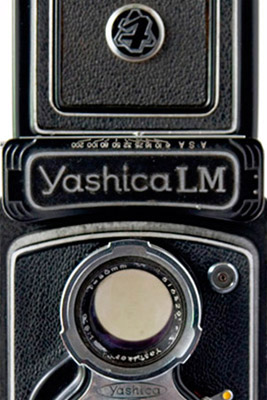
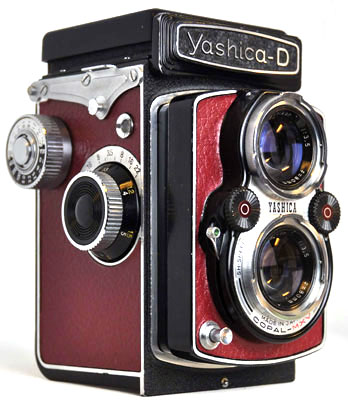
(Image on right courtesy of Göran Årelind)
The Yashica D on the right originally had the desirable grey leatherette. Not only was it in poor condition, it had to come off for camera repairs. Now it is a very nice user camera (see also below) but with little interest for collectors. They're the sorts of choices Yashica, and TLR owners in general, have to make.
Whereas in the past, I would have recommended cameraleather.com wholeheartedly, a search of Internet forums clearly indicates problems already in 2011 and early 2012 regarding excessive delays, unanswered emails, non-delivery issues and other problems. For anyone contemplating this route, I strongly suggest that you do your own research first and make up your own mind. If anything changes, I will post an update here.
Update: A search of forums revealed that earlier in 2014, some people were still experiencing problems but there were some satisfied customers as well. The cameraleather.com website appeared to experience some major issues in August 2014 with a note near the header stating that parts of the site were still down on 14 August 2014 but should be back up by the end of the day. As at 15 January 2015, most links still appear to be broken. That is still the case in March 2016 and by all appearances, it seems that this firm is out of business. I have since been advised that it may still be operating in a low key manner and without a functioning website but you will need to follow this up yourself.
There is now another firm, hugostudio.com, supplying laser cut covers in various materials for the following Yashica TLRs (as at 24 January 2018):
Yashica 12
Yashica 24
Yashica 44
Yashica 44LM
Yashica 635
Yashica A
Yashica B
Yashica C
Yashica D
Yashica-Mat
Yashica Mat-124G
Yashica Mat-LM
Yashicaflex A-II
Note: The Yashicaflex A-II kit is for the new body type but with cable release still and no hood logo. So if you have a hood logo, you may need to cut the hole yourself. If you have a press button shutter, you may need to ask the firm to not cut out the cable release part. The A-II kit can of course be used for a similar A-I if you cut the red window hole yourself. Similarly with the AS-II, you would need to do the meter cut-out and ask for the A-II accessory shoe cut-out to be deleted. In the same way, the Yashica C covering could be adapted for the Yashica LM but the accessory shoe location is different and would need to be deleted. The Yashica A, D, 635 and Mat can have 2 screws in the back or not and there were different hood logos for these models plus the Yashica B. Look at the versions displayed on the website, compare to your own and then negotiate with hugostudio.com. Don't expect the firm to be familiar with all the various Yashica nuances. See Göran's Red Yashica D below for the first result (the back only is cut by hugostudio.com).
If you are doing the cutting yourself, there are some guides and articles on the net which may help. The golden rule is to make an accurate as possible template/pattern. Getting curves and corners right is often helped by building up small sections using layers of masking tape - if a mistake is made, just add another layer and re-cut the offending section.
Göran's Red Yashica D
Göran started his Yashica D project several years ago when the above photo first appeared on this site. First he acquired some top-quality red book binding leather from UK firm J Hewit & Sons Ltd, https://hewit.com/, whose helpfulness he highly praises. As well as various types and colours of leathers, the website also offers a range of leather working and trimming tools. The firm's postal address is:
J Hewit & Sons Ltd.
12 Nettlehill Road
Houstoun Industrial Estate
Livingston, West Lothian EH54 5DL
United Kingdom
Next, Göran cut the sides, front and top pieces himself. From the photos below, you can see that he did an excellent job, demonstrating what is possible:
/Small/4-Frame in pos.jpg)
/Small/5-Front under test.jpg)
/Small/6-Old_New skin.jpg) (Images
courtesy of Göran Årelind)
(Images
courtesy of Göran Årelind)
(Click on images for larger versions)
Then Göran ran out of puff! Not visible is the missing back piece. In 2016, he decided to test hugostudio.com and sent them a piece of his red leather. They laser cut it and sent it back to Sweden from the US for a cost of US$18, including postage. Pictures of the completed camera are below:
/Small/Yashica D_1_L.jpg)
/Small/Yashica D_2_L.jpg)
/Small/Yashica D_3_L.jpg)
/Small/Yashica D_4_L.jpg)
/Small/Yashica D_5_L.jpg) (Images
courtesy of Göran Årelind)
(Images
courtesy of Göran Årelind)
(Click on images for larger versions)
May not be original but a rough looking camera has turned into something spectacular. Needless to say, the key is craftsmanship, i.e. skill (which, like by Göran, can be learned) and patience.
Since then, Göran was invited to contribute an article to J Hewit & Sons Ltd in-house quarterly magazine, Skin Deep. So, the same project in a little more detail and in his own words is extracted here:
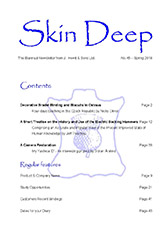 (Click on cover for PDF of article)
(Click on cover for PDF of article)
The full magazine and other editions are on the J Hewit & Sons Ltd website here.
120 & 127 Film
Both 120 and 127 film are available. A search of the internet and eBay will turn up current manufacturers and their product types and also on-line sellers. (Note that film choices, especially for 127, have suddenly become more limited with the news that Fotokemika in Croatia have ceased production of their Efke products due to equipment failure. This also apparently affects Rollei Retro 80 B&W 127 film which was repackaged by Fotokemika. Information provided courtesy of Jim Hurtle).
It is certainly the case that because of its “professional” heritage and greater popularity and hence sales volumes, 120 film remains available much more widely with greater variety of emulsion types at far more attractive prices. Clever people have come up with different ways to split 120 down to 127, which incidentally, also provides a correct size off-cut for use in 16 mm cameras for anyone also interested in those. Presumably, that includes the Yashica Y16 introduced in 1959. Below are words and photos from contributer and Yashica 44LM owner Bill Pruitt describing his two adaptations from ideas found on the net:
“I have made a film slitter out of an old TLR parts body that cuts one 16 mm film strip and a 127 film strip that you can cut with out putting it in a dark room or dark bag, however to re-spool it you will need to be in total darkness, but if you use this it’s less to do in the dark! It’s basically a box cutter blade mounted on a nylon block I cut then screwed to the bottom of the TLR film take up area. The body could still be used if ever needed because the holes are in the enclosed area. The blade was set a little above the film level and touches the back plate on the TLR.”
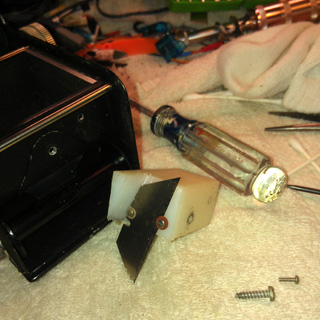
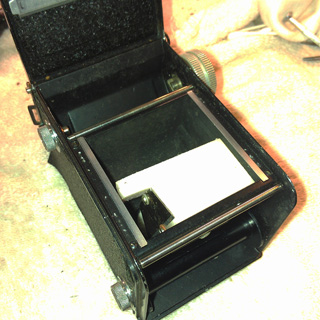
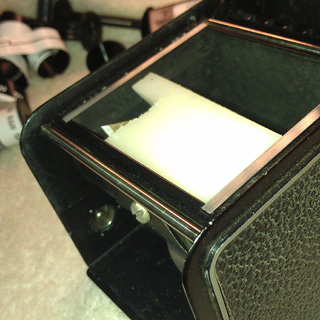
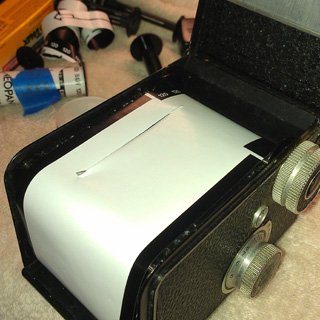
(All images courtesy of Bill Pruitt)
Here is Bill's second method which doesn't involve any modifications to a precious TLR!
“I used Double Edged Razor blades (under $2 at the local Walmart Store). You can flip these to end up using all four edges so they will last a while and you get ten of them in the package.
I used some PVC scrap I had from a trimming job I did on some sliding glass doors I installed in the house last summer. You can get this stuff at almost any hardware super store. I got this at Lowe’s. It comes in a lot of sizes and I like to use it on outside house trim because it doesn’t rot. It sands well and cuts easily. I also used some 10-24 All-Thread I got at Lowe’s with some wing nuts. The photos show the steps I took to make it. All areas that touch the film were sanded with 400 grit sand paper after they were roughed in.
The pictures show what I set up to cut 16mm film strips, however if you leave off the second two cutter blades, you get one strip of 16 mm film and one strip of 127 film. I rounded the edges slightly where the film comes in and exits in the top and bottom block and put a groove in the top block for a rubber band to go to hold it together. I also cut a notch in the top block for orientation in case I want to do everything in the dark bag and can not see which way the top block should go on (you can use the top threaded rod on the bottom block for this so you don’t need a groove in it). You use the spacing between the blocks for the size film you want to cut, but if you buy a piece of this PVC board you will have plenty for all the size film you want to slice from a 120 roll. You also need a little gap for the top block to be a little above the film. This thing works great. I used a band saw, small drill press, and table saw that I already had to make this go faster when I was building it, but it can easily be made with hand tools as the PVC cuts easy.”
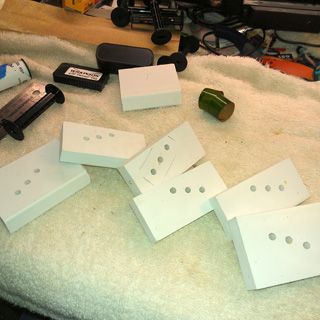
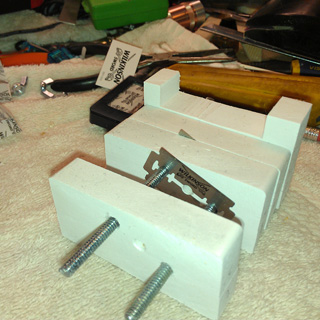
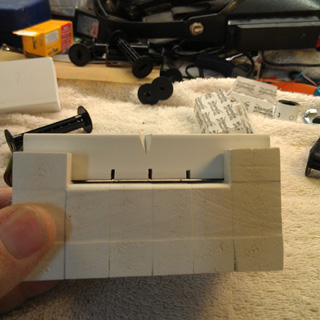
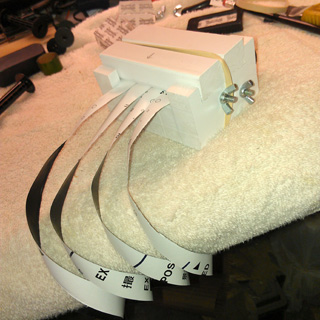
(All images courtesy of Bill Pruitt)
To finish the job, you need a spare 127 film spool:
“Once you re-spool the film, Set the counter on the side of the camera to zero. Then put the film in your 44 camera (44LM shown) and stop advancing the film when the START arrows on the film line up with the two arrows in the middle of the camera back that are molded in the body. Shut the back, then mark the advance knob with a piece of tape and advance the knob eight full turns, then reset the counter on the side of the camera and take the 12 shots as normal, then reset the counter and take four more shots (if you used the full length of the 120 film). Yes you can get 16 shots if you line up everything right. Then take out your film and develop it, and do everything again and most of all have fun!”
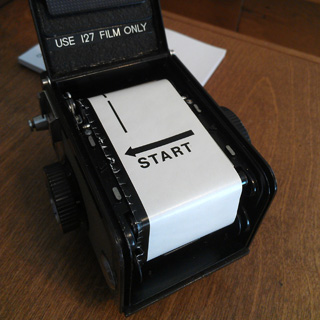
(Image courtesy of Bill Pruitt)
Note: Using cut 120 film in Yashica 44 and 44LM models is reasonably straight forward. It would be more difficult in the Yashica 44A which also has the moulded start marks but normally relies on the frame numbers printed on the backing of 127 film for manual frame spacing. Perhaps by counting the number of turns and remembering the number of images taken, it can be done but it would be a challenge!
Adapting 120 Film for the Yashica 44A
Issue a challenge and someone will always find a way to take you on! Correspondent and Yashica 44A owner Shalom Septimus has done just that and very effectively too. This is a great solution:
“It's no challenge at all, really; I do it all the time.
You need a film slitter like the one Mr Pruitt made, or similar; I've purchased one from Joe McGloin of the SubClub, who advertises on eBay as “xkaes” (called the “Al Spoil” Filmslitter), that works on the same principle.
The trick is as follows: Hold the roll of 120 film such that the film unwinds away from you. When you do this, there will be three tracks of numbers from left to right, one each for 6x9, 6x6 and 6x4.5. Set the blade to cut 16mm off the left side; i.e. you are chopping off the side with the 6x9 numbers. You are now left with a 46mm strip that has a 4x4.5 track at the left edge, and a 4x6 track in the middle. Unfortunately, real 127 film has the 4x4 track at the right side. So what do you do...?
Simple, you spool what's left onto a 127 spool, but you start at the end and spool it backwards. Make sure you tape down the loose end of the film to the backing paper (you'll probably have to peel off the tape at the other end when you reach it). This will put the 4x4.5 track, which was at the left before, on the right side, where the 44a has its ruby window. Now you load it into the camera, wind until you see “16”, and start shooting. Keep going until you reach “1”. It lines up perfectly, I was astounded when I discovered this.
You'll probably have to shorten the end of the leader just a few inches to fit it all on the 127 spool. Also remember to explain to the photo lab, if you're not developing your own, that it's exposed film even though the roll is at START.”
One User's Experience
When correspondent Jim Hurtle wrote to me about many decades of Yashica TLR use, his story struck me as an authentic example of the amateur photography experience in the US in the 1960s to 80s period. From others' stories, finding Yashica TLRs being used for school and university newspapers and in their photography departments seemed to be a not uncommon occurrence and not surprising given the cameras' economy and utility. Note also his comments about Yashikor triplets vs Yashinon Tessars which echo others who own both and is a great antidote to the modern preoccupation with pixel peeping:
“I have accumulated several cameras and still use them all. The first was a Mat-EM when I was in high school in Arizona. 80% of my photography is digital these days; however, I still maintain a working wet darkroom in my basement and shoot b/w film.
I bought the Yashica TLR at the guidance of our school’s yearbook advisor to improve the quality over the Minolta HiMatic-9 35mm RF camera I was using at the time. I was using the school’s Yashica-635 (with 120 film) and getting great results; however, the camera was in high demand by all of us volunteers and so it was often loaned out. I saw the second-hand EM in the window at the now-defunct Shafer’s Camera Corral in Scottsdale, Arizona for a mere $29.95 and it had just had servicing for a film advance/release problem and was like-new with the ever-ready case and lens cap.
3 years later, I used the Mat-EM in college at Oklahoma State University where I was a photographer on the newspaper staff for just one year (my electrical engineering studies became too intense to spend much time on photography). Normally, I used a Pentax H1a (S1a) camera; however, for anything that required flash (basketball or large groups) I used the Yashica Mat-EM since X-sync was good all the way to 1/500 sec.
My next Yashica TLR purchase wasn’t until 1978 or 1979 (while working at Procter & Gamble and living in Missouri) when I purchased the Mat-124G new in Chicago in order to take advantage of 220 film length (TXP and PX were available in 220 lengths back then and I had a developing tank/reel for that long film size). The Mat-124G saw occasional use until intermittent film release problems prevented winding on without first pressing the shutter release multiple times after each exposure (the shutter would trip each time but the film-stop wouldn’t disengage to permit advancement to the next frame in a consistent manner). I sent the Mat-124G to Mark Hama a couple of years ago for an overhaul and it now works perfectly, including the meter, and new light and finder seals.
Over the years, I picked up other Yashica TLR’s and built a small working collection including – Yashica-A (mfg. 1964), D (mfg. 1961), 635 (Yashinon), and the 44A. None are really mint; however, all are in good working order and shutters within 1 EV at all speeds. The Yashikor’s do just fine, especially at f8 or smaller.”
I have also included Jim's B&W image of the toy train below taken with his Yashica Mat-EM. Whilst he is quite modest about it, I think it makes good use of the square format, is appealing on a number of levels and demonstrates the effective use of a close-up set, albeit not a Yashica type:
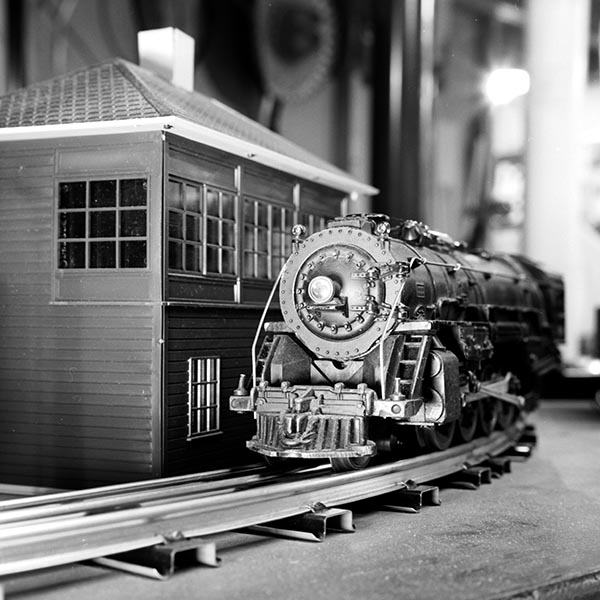 (Image courtesy of Jim Hurtle)
(Image courtesy of Jim Hurtle)
“I used a non-Yashica (Kalt) prismatic Bay 1 set “No. 3” that I bought when I purchased the second-hand camera in 1969. The train photo was lit with a 25w lamp and the exposure was for nearly one minute at f22 (measured then increased for reciprocity characteristics of FP4+). The camera was about 14” (36 cm) away from the locomotive.”
Compare the smooth bokeh of the Yashinon 4 element lens (plus close-up lens) to the swirly bokeh of the Yashikor triplet on the Lenses & Shutters page.
And just to prove that Jim is not a one trick pony, and also to give credence to his comments regarding Yashinons vs Yashikors, here is one shot at f/8 on a Yashica D with Yashikors and a yellow filter. Film used was time expired Ilford Delta 400:
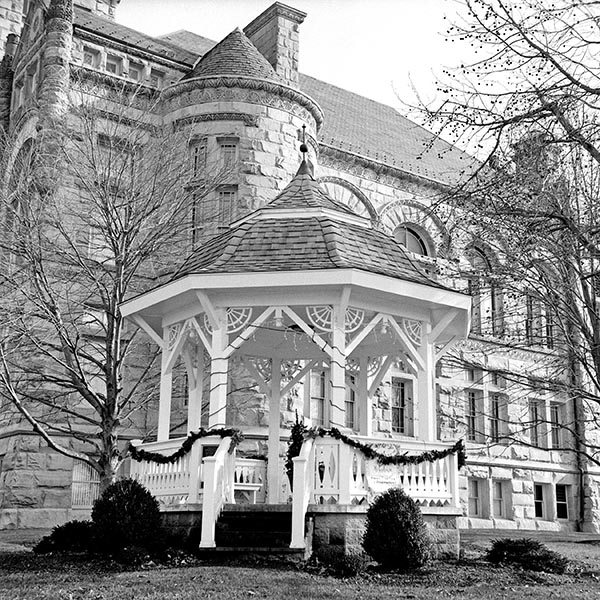 (Image courtesy of Jim Hurtle)
(Image courtesy of Jim Hurtle)
Valuation & Selling
I mentioned in “About Me” on the Site page that I have very little expertise regarding valuation matters and that I am not prepared to put a dollar figure on someone else's camera. However, there are some things worth thinking about.
How valuable are Yashica TLRs generally? They are not very interesting to the really serious collectors. There are simply too many and they are not technically different or interesting compared to their peers. People who collect Yashicas will be price sensitive. It is actually the case that the big bucks spent on Yashicas is by users who want to shoot 120 and their camera of choice, not for any real good reason, is most often a Yashica Mat-124g followed by other late models depending on budget.
A reminder: A camera is only worth what someone is willing to pay at the time that the camera is offered for sale. In practical terms, the value is set by what other similar items have sold for. Check completed listings, other similar cameras for sale and if an auction, the pattern of bidding. Also, as we will see, value is affected by the seller's selling nous.
A comment about auctions. By their nature, they determine a camera's value automatically. Providing there are enough interested bidders, the outcome will be a fair price for both seller and buyer. These work well with good user cameras. With collectibles, the number of potential bidders is probably less and one of the two guys who may have bid maybe on holidays that week. As a seller, I use auctions but if I think that there will be limited interest, I set a starting price that will get attention but wont make me cry if there is only one bid. I am rarely unhappy. As a buyer, except for low value items and obvious bargains, I avoid “buy it now” pricing because I know that most sellers have an inflated view of their item's worth. These are just my personal preferences.
Once you have determined the value range, the next step is to determine the condition. Overall appearance is obvious. Originality is not so clear cut and is best determined by comparing to photos of similar cameras from similar periods with particular regard to things like viewfinder hoods, camera backs and meters (if they have the serial number on them). In fact anything that might get damaged in a fall or broken for some other reason - most parts are interchangeable.
If you are not familiar with this type of camera, my suggestion is that either get the camera looked at by a reputable service tech or at least perform some elementary tests yourself. See also “Weaknesses Specific to Yashica TLRs” above. Don’t worry about film (although that would help to reassure buyers), just try operating the camera in accordance with the most appropriate user manual from OrphanCameras.com. The main things to check are that the focus is smooth, that the film advance crank or knob winds as described in the manual, the shutter cocks and fires and that all the shutter speeds sound OK. If they sound progressively quicker (or slower), that’s probably enough to keep prospective buyers interested. I have said this elsewhere: VERY IMPORTANT! You probably should leave the self timer alone but if you decide to test it, MAKE SURE THAT THE M/X SWITCH IS NOT SET TO THE “M” POSITION. If it is, there is a very good chance that the shutter will jam and the camera has to come apart or become a paper weight.
I have also warned about not operating the crank on crank wind models with an empty spool in the take-up chamber (the chamber with the serrated wheel).
These cameras are susceptible to fungus. If you are not sure what that is, Google it. There is only one way to check for fungus. Open the aperture wide (f/3.5), set the shutter to “B” (bulb), cock the shutter with the lever or crank as appropriate, open the back, press and hold down the shutter button and look at a bright light (obviously not the sun or anything else that might damage eyesight). If there is fungus, you will know (like a spider web). A little may be OK in an old camera but a lot can be terminal.
If a camera comes up clear on these tests and the appearance is excellent with no paint loss, there is no corrosion and the leatherette is not damaged, loose or stained, then the camera is in the running to be worth top dollar for the particular model. However, remember, what the camera is worth is what someone will pay for it. If a seller only has one or two dark, out of focus photos, limits their market to maybe their home country and instead of giving an honest appraisal of the camera, says something like “I know nothing about this type of camera but it looks OK”, then the seller is increasing buyer risk substantially as well as perhaps limiting buyer competition for the camera and the effective value of the camera is much less.
If a camera exhibits some deficiencies, the seller needs to revise their expectations accordingly. If the deficiencies are serious, the camera is still worth something “for parts or repair” and a collectible may still be desirable for display anyway. In such cases value is probably best determined by auction.
There are a few high profile on-line sellers who offer Yashica TLRs at quite high buy it now prices. There are quite a few other sellers who think that those prices set the value benchmark and that they can ask the same prices. They are very wrong. The few high profile sellers are knowledgeable about their products, have competently checked them, provide an honest description with a guarantee of usability and are prepared to advertise for months at a time until a well heeled buyer, who wants to buy with a minimum of risk and fuss, comes along. The premium that is being paid for is service, not the camera itself. Unless of course, they have the only example in town.
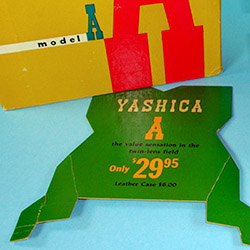


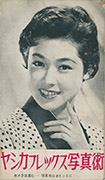
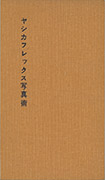
.jpg)
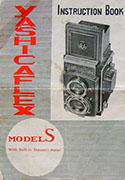
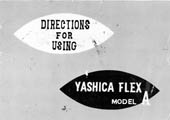
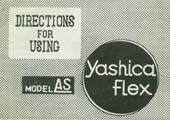
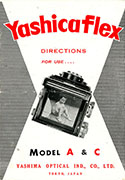
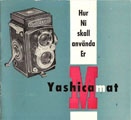
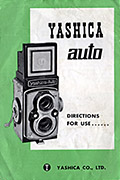
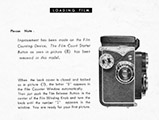
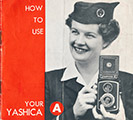

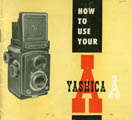
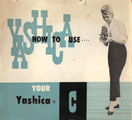
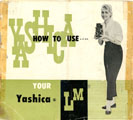
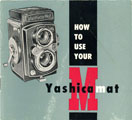
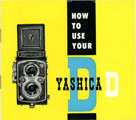
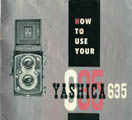
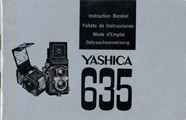
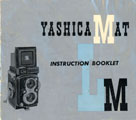
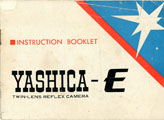
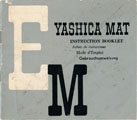
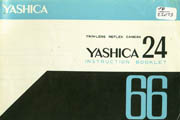
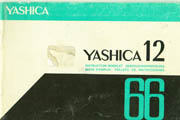
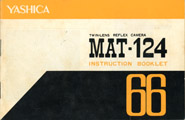
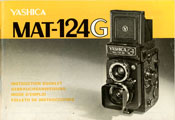
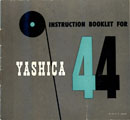
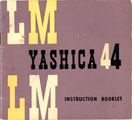
/Small/1-Leather from Hewit.jpg)
/Small/2- cutting hood-frame.jpg)
/Small/3-Frame completed.jpg)